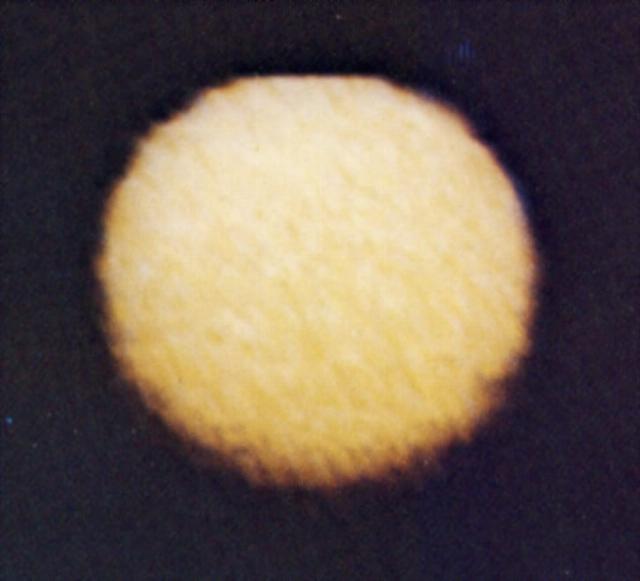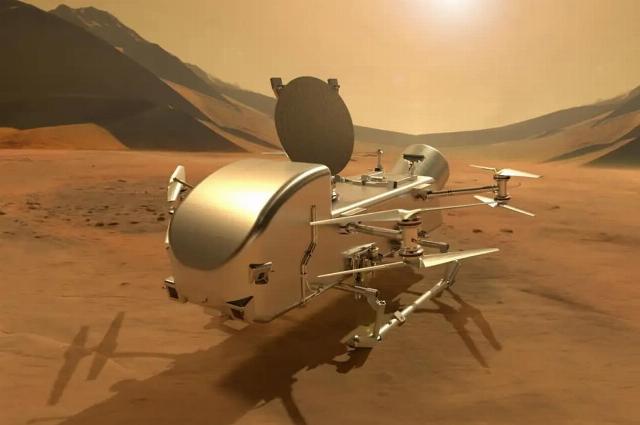In 2028, NASA experts plan to send the Dragonfly spacecraft to Titan to study the surface of Saturn's largest moon. A team of American planetary scientists has studied the processes taking place on Titan using computer simulations and identified a serious danger that could endanger the mission.
Scientists first saw Titan in photographs in the late 1970s. They were transmitted by the Pioneer-11 probe. A little later, Voyager 1 received more detailed images: it photographed the atmosphere. It turned out to be quite dense, and its composition includes nitrogen, methane, other gases and organic aerosols. It turned out that the atmosphere of Titan consists of 95% nitrogen .
In 1997, scientists sent the Cassini-Huygens mission to Titan, consisting of an orbital station and a descent vehicle. On radar images taken by the Cassini probe in 2006, scientists saw "pools" filled with liquid hydrocarbons (methane and ethane) with a diameter of one kilometer to several hundred kilometers. This is the first time liquid lakes have been discovered outside the Earth.
The Huygens spacecraft helped to see the surface of Titan. In the images he managed to take and transmit over 22 days of work, the researchers saw plains covered with boulders and strange streaks that looked like traces of wind erosion.
These data made us think about the role of wind in shaping the landscape of Titan. Until now, it was believed that relatively weak winds were blowing on the surface of Saturn's moon — 0.01 meters per second (according to Huygens measurements). Theoretically, such air flows are not capable of moving large objects. However, new calculations have shown that the wind force on Titan is greatly underestimated.

Image of Titan. received by the probe "Pioneer-11" in 1979
Image source: NASA
In 2028, NASA engineers and the Johns Hopkins University Laboratory of Applied Physics (USA) plan to send a Dragonfly rotary-wing aircraft with a nuclear installation to Titan. It will arrive at Saturn's moon in 2034 and will perform controlled flights at low altitudes, land, move between locations and collect data directly from the surface to look for traces of prebiotic chemistry.
To better understand what Dragonfly will encounter on Titan, planetary scientists John Marshall and Lori Fenton from the SETI Institute in the United States modeled the conditions that could await the spacecraft upon landing. Three factors were taken into account: low gravity (about 14% of Earth's), atmospheric density (four times higher than Earth's), and rock composition. Local boulders are not silicate rocks, as on Earth, but a mixture of water ice and tholins, organic compounds with a density of 900 kilograms per cubic meter (compared to 2,700 kilograms per cubic meter for terrestrial stones).
The scientists combined all these factors to estimate the probability of stones moving across the surface, and conducted a series of computer simulations. It turned out that on Titan, the wind is 80 times "stronger" for moving boulders than on Earth.
Calculations have shown that even with wind speeds near the surface of a meter per second, rocks with a diameter of 50 centimeters can easily move and easily damage the Dragonfly, so the drone will have to avoid areas where they accumulate. For comparison, on Earth, a similar wind speed will only move grains of sand.
The problem is that Huygens measured winds only at the landing point, perhaps the calmest region of Titan. Therefore, the data of the device did not reflect the "wind rose" of Saturn's satellite, which means that it is a mistake to use them in the Dragonfly mission.
Planetary scientists noted that the results of their research should be taken into account when planning the upcoming mission, otherwise the device will face serious danger.
NASA scientists are already working on algorithms for autonomous detection of hazardous areas. Most likely, special cameras will be installed on board the Dragonfly, which will be able to determine safe landing sites offline, theoretically, the drone will be able to easily avoid such rocks.
The results of the study are presented in the journal Planetary and Space Science.

